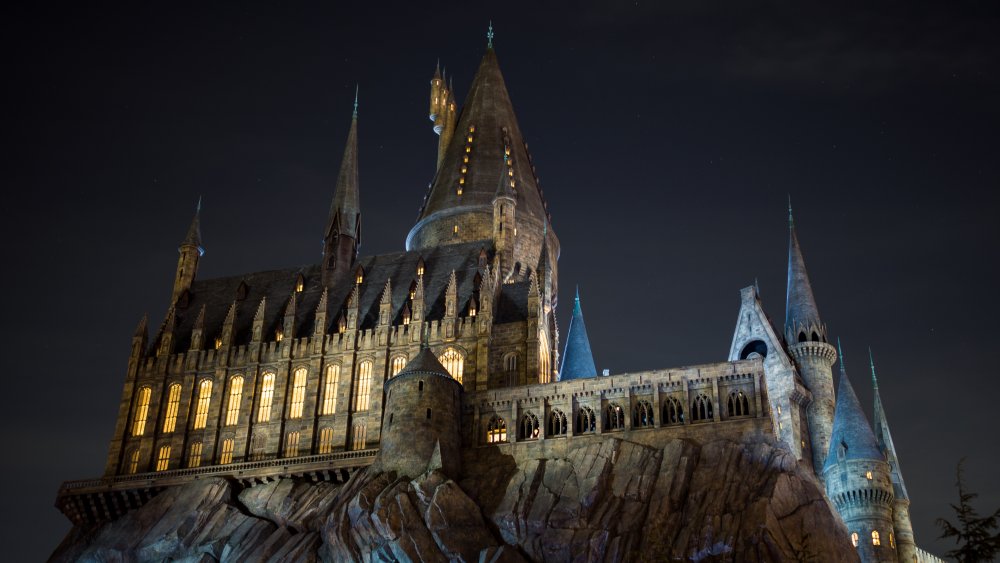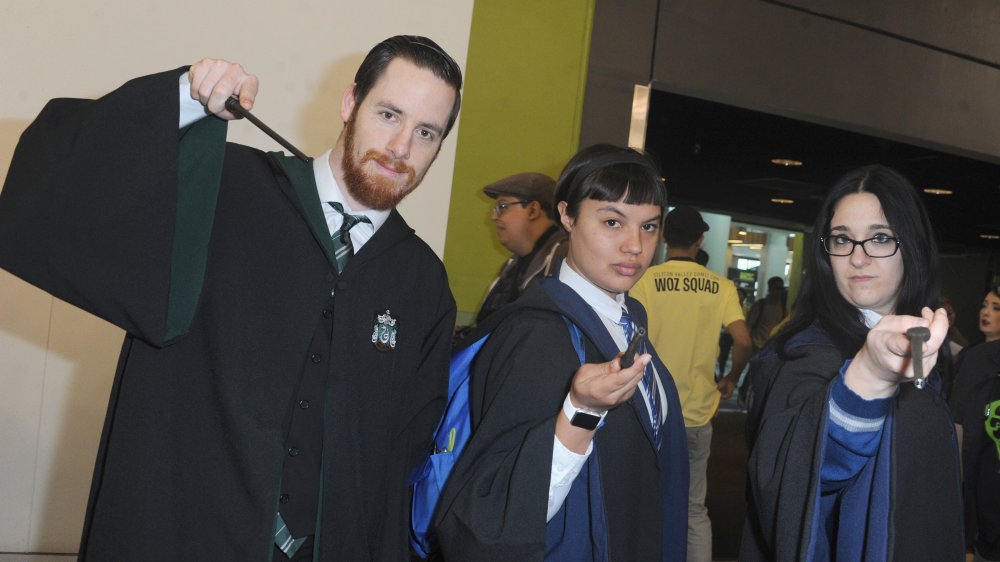The Hidden Meaning Of Hogwarts' House Colors
Fans of the Harry Potter series know students at the Hogwarts School of Witchcraft and Wizardry are sorted into one of four houses. You can be a Ravenclaw, Slytherin, Gryffindor, or a Hufflepuff, based on what a hat thinks your personality is. (Never mind that it's your personality at 11 years old. That's a rant for a different day).
The houses represent different traits. Ravenclaws are generally curious and value knowledge, Slytherins are ambitious, Gryffindors are brave and impulsive, while Hufflepuffs are loyal. But it isn't just traits that make each house stand apart. Even the house colors mean something.
If you've ever seen a photo of the houses, you'll notice each is represented by animals and colors. And just like most things in the series, these colors mean something. According to an article at Wizarding World by series author J.K. Rowling, the colors stand for the elements. For example, Ravenclaw's house crest shows an eagle, and their house colors are blue and bronze. Blue stands for the air, and bronze represents eagle feathers. Gryffindor's red and gold are connected with fire, while Slytherin's green and silver refer to water. Hufflepuff's yellow and black represent wheat, soil, and earth. Beyond a connection to the elements, the colors could also point to each house's standing in the school.
The house colors mean so much
Mugglenet pointed out Gryffindor, Slytherin, and Ravenclaw's house colors all involve metal. These metallic colors could stand for medals or rankings. In the first book of the series, Harry Potter and Sorcerer's Stone, Gryffindor won the House Cup, a prize for the house that accumulated the most points throughout the year. They were followed by Slytherin and Ravenclaw. Coming in last is Hufflepuff.
But Mugglenet said it isn't just in the race for the House Cup that the colors become essential. As the home of series hero Harry Potter and his two best friends, Hermione Granger and Ron Weasley, Gryffindor is the most crucial house in the books. Slytherin, on the other hand, counts the villains Voldemort, Snape, and Draco Malfoy as members, so it's the second most important house. Luna Lovegood, and to a certain extent Cho Chang, were integral to the series, making Ravenclaw a significant house. But with apologies readers out there who identified with Hufflepuff, that house only had one major character in the main series, Cedric Diggory. (And yes, Newt Scamander from Fantastic Beasts and Where to Find Them is a Hufflepuff, but that's not the main series).
Colors have great symbolism in the wizarding world, wrote Rowling. Green is generally the color of superstition and dark magic, while purple, the color most wizards wear, represents nobility. It's no wonder that even the Hogwarts house colors are loaded with meaning.

